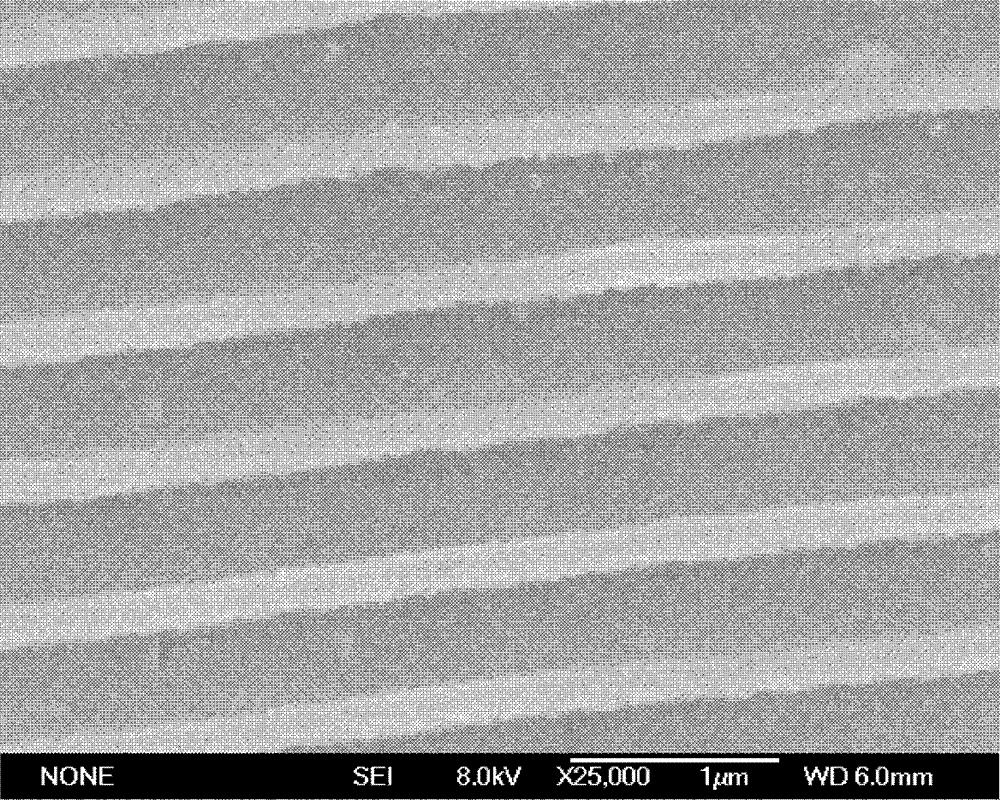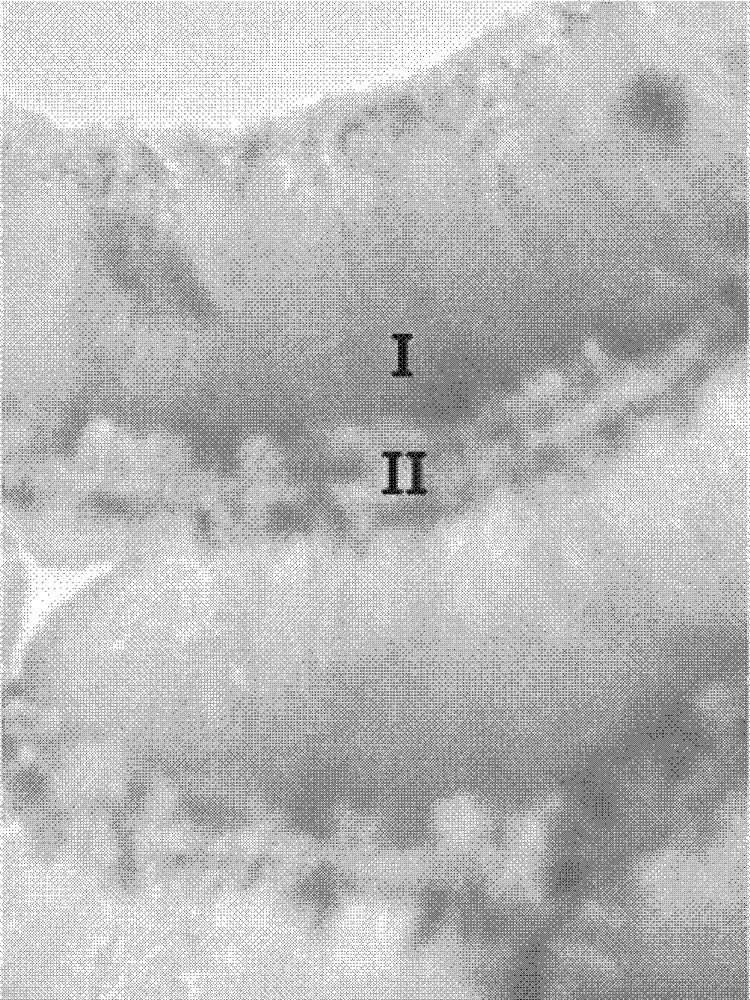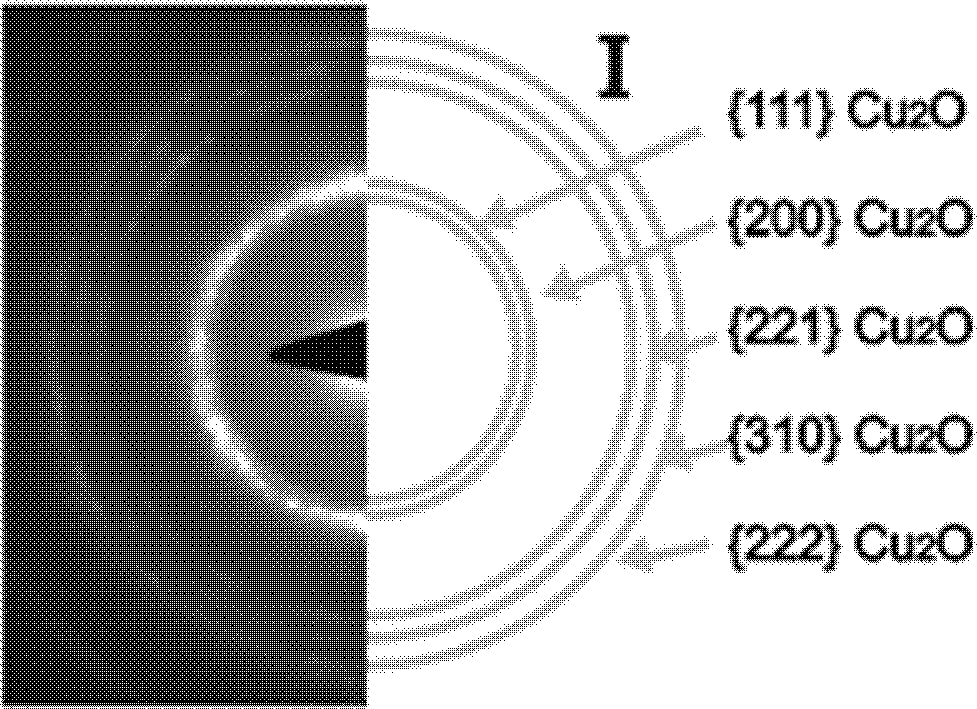Gas sensing material of cuprous oxide and stannic oxide micro-nano heterogeneous medium array structure and preparing method thereof
An array structure, tin dioxide technology, applied in analytical materials, instruments, measuring devices, etc., can solve the problems of inability to prepare, unsatisfactory gas sensitivity, etc., achieve excellent gas sensitivity characteristics, improve temperature dependence, and high sensitivity Effect
- Summary
- Abstract
- Description
- Claims
- Application Information
AI Technical Summary
Problems solved by technology
Method used
Image
Examples
Embodiment 1
[0030] 1 Use deionized water, 0.004 moles of copper nitrate and 0.001 moles of stannous chloride to configure 50ml of electrolyte, and adjust the pH to 2.6 with nitric acid;
[0031] 2 In a temperature-controlled growth chamber, use the silicon wafer with surface oxidation treatment as the substrate, place the silicon wafer flat in the growth chamber, and then place two copper foil electrodes in parallel on the silicon wafer, and then drop the copper foil between the two electrodes electrolyte, and finally cover with a coverslip. Control the temperature at minus 4 degrees and leave it for 10 minutes;
[0032] 3 Then use the cooling element in the growth chamber to freeze the electrolyte, and naturally form a thin liquid layer of about 300 nanometers between the solidified electrolyte and the surface-oxidized substrate silicon wafer, and keep it at a low temperature of minus 4 degrees for 1 Hour;
[0033] 4 Apply a 2 Hz half-sine voltage (minimum voltage 0.4V, maximum voltage...
Embodiment 2
[0037] 1 Use deionized water, 0.004 moles of copper nitrate and 0.001 moles of stannous chloride to configure 50ml of electrolyte, and adjust the pH to 2.2 with nitric acid;
[0038] 2 In a temperature-controlled growth chamber, use the silicon wafer with surface oxidation treatment as the substrate, place the silicon wafer flat in the growth chamber, and then place two copper foil electrodes in parallel on the silicon wafer, and then drop the copper foil between the two electrodes electrolyte, and finally cover with a coverslip. Control the temperature at minus 2.6 degrees and place it for 20 minutes;
[0039] 3 Then use the cooling element in the growth chamber to freeze the electrolyte, and naturally form a thin liquid layer of about 300 nanometers between the solidified electrolyte and the surface-oxidized substrate silicon wafer, and keep it at a low temperature of minus 4 degrees for 1 Hour;
[0040] 4 Apply a 0.5Hz half-sine voltage (minimum voltage 0.4V, highest volt...
Embodiment 3
[0045] 1 Use deionized water, 0.0025 moles of copper nitrate and 0.0005 moles of stannous chloride to configure 50ml of electrolyte, and adjust the pH to 2.0 with nitric acid;
[0046] 2 In a temperature-controlled growth chamber, use the silicon wafer with surface oxidation treatment as the substrate, place the silicon wafer flat in the growth chamber, and then place two copper foil electrodes in parallel on the silicon wafer, and then drop the copper foil between the two electrodes electrolyte, and finally cover with a coverslip. Control the temperature at minus 2.6 degrees and leave it for 30 minutes;
[0047] 3 Then use the cooling element in the growth chamber to freeze the electrolyte, and naturally form a thin liquid layer of about 300 nanometers between the solidified electrolyte and the surface-oxidized substrate silicon wafer, and keep it at a low temperature of minus 4 degrees for 1 Hour;
[0048] 4 Apply a half-sine voltage of 0.2 Hz to the electrode (the lowest ...
PUM
| Property | Measurement | Unit |
|---|---|---|
| particle size | aaaaa | aaaaa |
| particle size | aaaaa | aaaaa |
Abstract
Description
Claims
Application Information
 Login to View More
Login to View More - R&D
- Intellectual Property
- Life Sciences
- Materials
- Tech Scout
- Unparalleled Data Quality
- Higher Quality Content
- 60% Fewer Hallucinations
Browse by: Latest US Patents, China's latest patents, Technical Efficacy Thesaurus, Application Domain, Technology Topic, Popular Technical Reports.
© 2025 PatSnap. All rights reserved.Legal|Privacy policy|Modern Slavery Act Transparency Statement|Sitemap|About US| Contact US: help@patsnap.com



